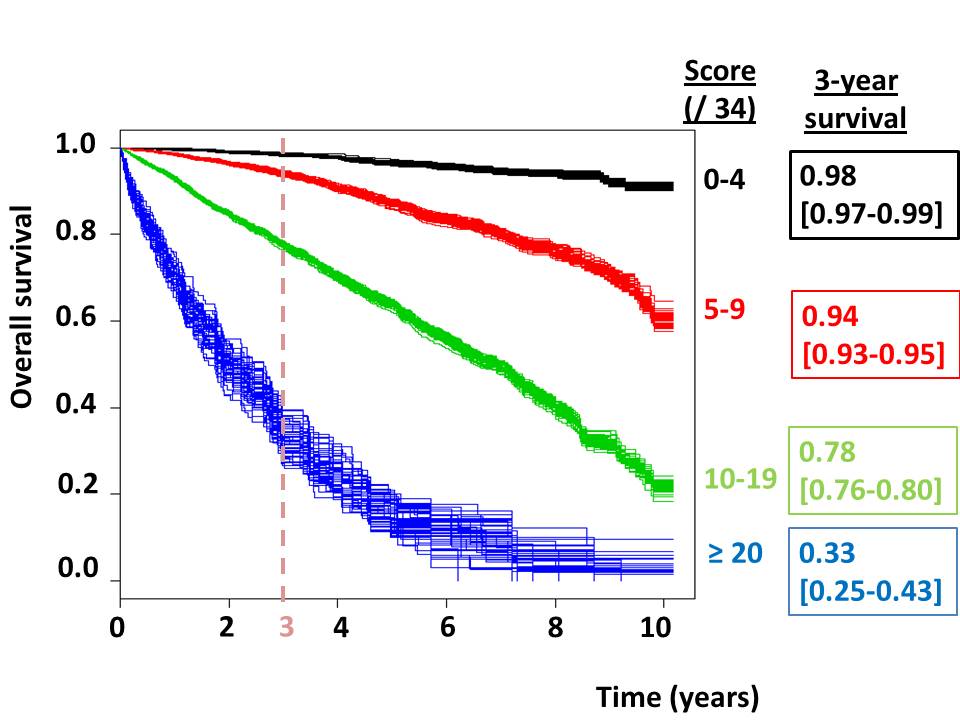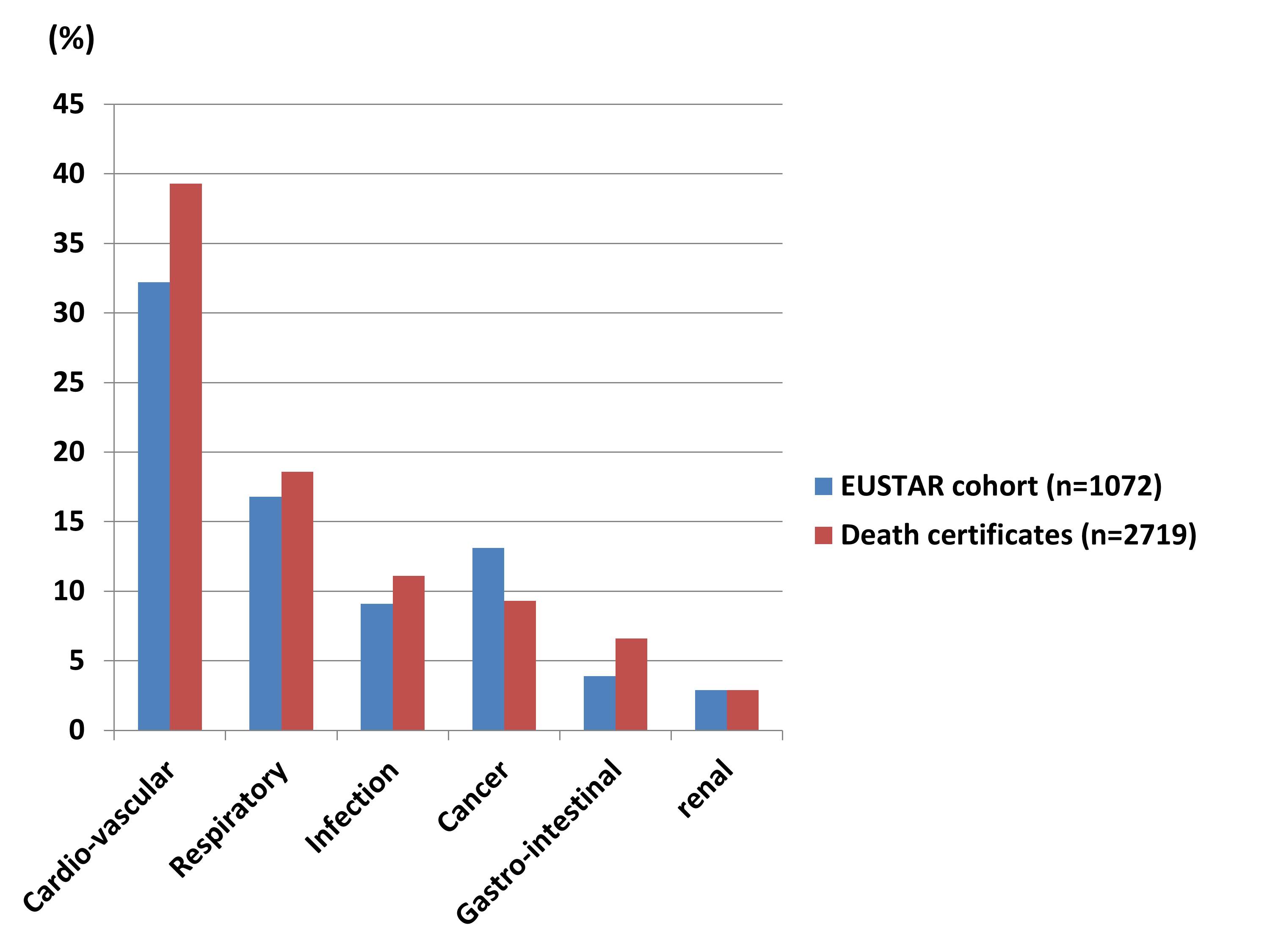Session Information
Date: Monday, November 14, 2016
Title: Systemic Sclerosis, Fibrosing Syndromes, and Raynaud's – Clinical Aspects and Therapeutics II
Session Type: ACR Concurrent Abstract Session
Session Time: 2:30PM-4:00PM
Background/Purpose : Systemic sclerosis (SSc), a connective tissue disease, is associated with high mortality rates. The main causes and risk factors for death are only poorly known. Our aim was to better determine causes and predictors for mortality by using two complementary strategies.
Methods : We first studied causes and predictors of death among the international multicenter EUSTAR cohort; overall survival was estimated by the Kaplan-Meier method, prognostic factors were identified by multivariate cox analysis with imputations for missing data. A risk score for 3-years mortality was established and internally validated by bootstrapping. We then examined standardized mortality rates, its trends over time and the causes of death in SSc-patients from the exhaustive analysis of all death certificates in France from 2000 to 2011.
Results : In Eustar cohort, a total of 11,193 SSc-patients were included: 86% of women, 31% of diffuse cutaneous forms, and mean disease duration: 8.1 years. During a median follow-up of 2.3 years, 1072 (9.6%) patients died. Multivariate analysis identified 14 independent predictors for death (age, male sex, CRP elevation, dyspnea, lung fibrosis and decrease in DLCO and FVC, proteinuria, and scleroderma renal crisis, heart failure, Rodnan skin score, digital ulcers, and joint involvement) leading to establishment of a prognostic score. This score had better discrimination to predict survival at 3-years than previous mortality score (p<0.0001). Furthermore, it allowed accurate stratification of patients in four distinct groups of disease severity (Fig. 1). Death certificates identified 2719 deaths related to SSc: the causes of death strengthened those observed using the EUSTAR cohort highlighting the major contribution of the cardiovascular system (Fig. 2). The overall O:E ratio demonstrated an increased risk of death by infection (5.61), respiratory (2.99) and cardiovascular diseases (1.39) (particularly before 60 years (3.14)) in SSc-patients. Death certificates also revealed a decrease in standardized mortality rates during the time (1 per 105 patients in 2000 to 0.6 per 105 patients in 2011).
Conclusion : Using two complementary sources of information, which allowed working on the unreached number of 3700 deaths, we provide insight into the causes of deaths and emphasis on the contribution of the cardiopulmonary system. In addition, we have established a robust mortality score to estimate the 3-year survival of SSc-patients. The Scope score allows risk-stratification and will support future studies to improve the management in the perspective of extending survival in SSc.
 Figure 1 Overall survival according to simplified score categories. Curves are plotted for each of the 50 imputed dataset.
Figure 1 Overall survival according to simplified score categories. Curves are plotted for each of the 50 imputed dataset.
 Figure 2: Causes of death in EUSTAR cohort and in French death certificates
Figure 2: Causes of death in EUSTAR cohort and in French death certificates
To cite this abstract in AMA style:
Elhai M, Meune C, Avouac J, Amrouche F, Hachulla E, Balbir-Gurman A, Riemekasten G, Airò P, Carreira PE, Allanore Y. A Deep Insight into Causes and Predictors of Death in Systemic Sclerosis [abstract]. Arthritis Rheumatol. 2016; 68 (suppl 10). https://acrabstracts.org/abstract/a-deep-insight-into-causes-and-predictors-of-death-in-systemic-sclerosis/. Accessed .« Back to 2016 ACR/ARHP Annual Meeting
ACR Meeting Abstracts - https://acrabstracts.org/abstract/a-deep-insight-into-causes-and-predictors-of-death-in-systemic-sclerosis/
